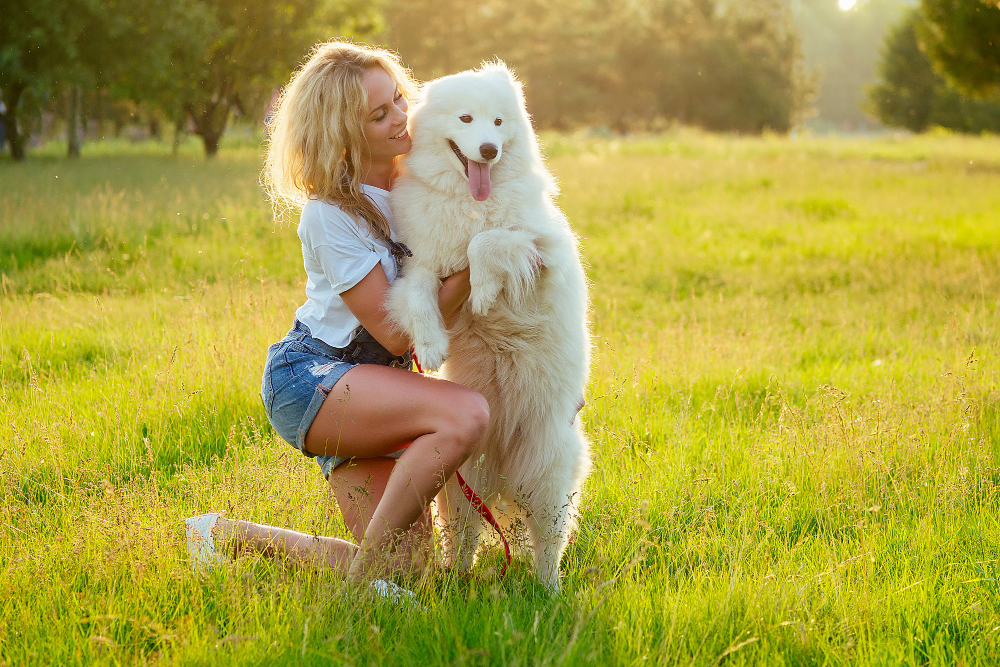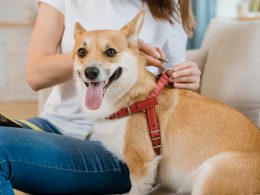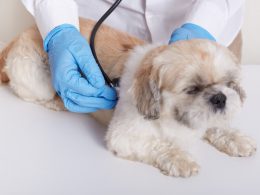We must transport all kinds of pets on trips to all places. Small and medium-sized dogs are easy to transport in case an accident or an unexpected illness affects them; with a simple transport box, you can carry them to veterinary clinics to continue care. It is a particular challenge when transporting a large dog. Large dogs require large shipping crates, of course, as well as special considerations before and during the shipping process. So if you have a special large-sized friend, it’s crucial to prepare carefully and start making plans as soon as you know you need to move your large dog somewhere else.
How Do You Carry A Heavy Dog In An Emergency?
Owners of large dogs always face a problem: the need to carry, lift or move their furry friend in certain situations. Knowing how to hold your dog is essential because, in addition to avoiding accidents with it, you will also be avoiding accidents that can cause back problems.
Large or heavy dogs cannot be carried by the abdomen alone. Because when moving it this way, you can cause damage to the internal organs, in addition to being highly uncomfortable to the dog. The best way to carry it is by wrapping your arms around the body, so it is well-balanced and lifting it to the height of your stomach. If your dog is passed out, be careful with the head, don’t let it hang, and support her in your arm. If you don’t have the strength to carry it alone, call a relative or neighbor for help. It is essential not to move the animal’s body too much. The ideal is to place it very carefully inside the transport box or on something firm so that it can be easily removed from the vehicle and taken to the clinic or veterinary hospital, avoiding movements that can harm the dog. If you have stairs in your house, the transport process becomes even more complicated; check the article “how do you carry a large dog upstairs” on how to carry it safely.
How To Transport A Large Dog That Can’t Walk?
If your dog can’t walk or walks with great difficulty, don’t force him to move. Keep in mind that this will do a lot of harm to his health, making the situation worse. Don’t worry. There are solutions for these cases!
The most used method with the best results is to use harnessed, which are adapted guides that work as a hook and transport it with the help of the straps.
There are also adapted wheelchairs that are tailor-made for paraplegic dogs and strollers adapted for quadriplegic dogs that you can pull and carry without great effort.
How Do You Catch A Big Dog Without Hurting Him?
Having your arms correctly wrapped around your dog’s limbs is one of the trickiest steps in the process. To do this, place your arms around the dog’s back and front legs while the dog is facing away from you. It would be best if you had your arms close to your body while you do this so your dog cannot run away.
How Do You Lift A Big Dog By Yourself?
This task can be difficult, especially if you are small and don’t have that much strength. The correct way would be to support the arms under the rib and the abdomen, carrying it in your arms between your legs, but this is not always possible.
If you have difficulty, choose mats to make it easier, as you will only need to lay it on top, pull the carpet to the car, and put it in the back seat with a seat belt. In these cases, check out the tips in the article “can you put a dog in the back of a van?”.
Most Common Emergency In Large Dogs
Due to some anatomical characteristics, large dogs may be more prone to some emergencies. Gastric torsion in dogs is an acute and severe disease that, if left untreated, can lead to death in a few hours. This veterinary emergency can also happen due to the mixture of a full stomach with physical activities, genetic inheritance, and specific details of the dog’s anatomy. Among the breeds most affected by gastric torsion in dogs, we can highlight:
- Setter;
- Labrador;
- Rottweiler;
- St Bernard;
- German Shepherd;
- Great Dane.
When Can Gastric Torsion Occur?
When the dog ingests an excessive amount of fermentable food (beans or various grains) or liquids, its stomach dilates and can consequently twist. The distended organ tends to turn abruptly on itself, cutting off any local blood access and preventing the gases it produces from being expelled. And then, full of food that needs digestion, the twisted stomach holds the food and doesn’t allow it to be eliminated from the dog’s body through the intestinal route or vomiting. In this way, the abdominal volume of the animal increases more and more due to the fermentation of what was ingested, with the formation of gases natural in the region.
Signs Your Dog May Have Had A Gastric Torsion
Gastric torsion in dogs compromises the blood circulation of various organs in the region, the absorption of gases that result in the region’s fermentation and causes the animal’s intoxication. That is, if in a few hours it is not attended by a trained veterinarian, he runs a severe risk of dying. Therefore, it is necessary to be aware of the first signs of the disease. Check out the main ones:
- flatulence;
- hypersalivation;
- wheezing;
- difficulty vomiting;
- sudden increase in abdominal volume
How To Prevent Gastric Torsion In Dogs?
The best way to preserve the dog from gastric torsion is to act preventively. Some simple and basic actions can be taken to reduce the risk of the animal being affected by the disease, such as:
- offer the dog good quality food;
- avoid stressful situations for the animal;
- restricting excessive consumption of water after eating;
- do not allow the animal to exercise after eating;
- provide divided foods two to three times throughout the day, never all at once.














